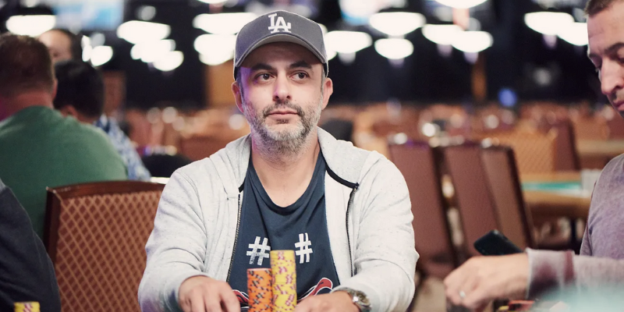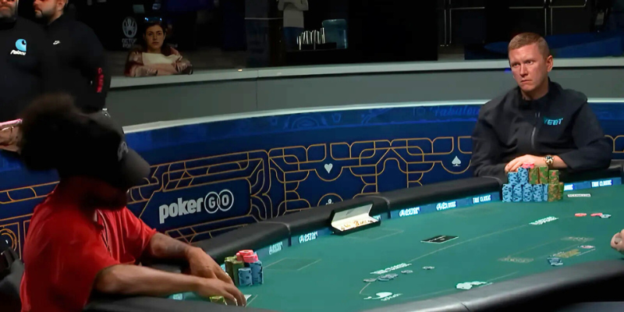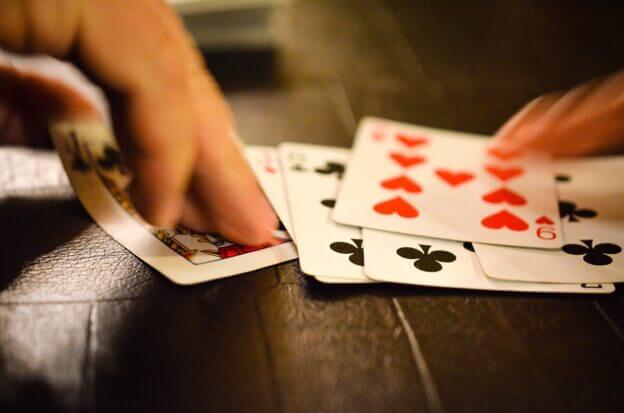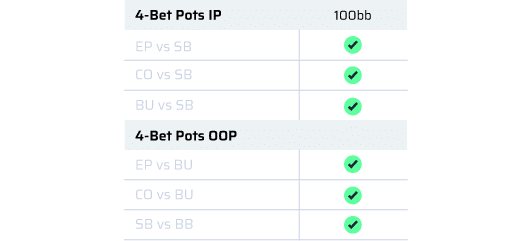Understanding transitions to future streets in poker is undeniably challenging, more so even in Pot-Limit Omaha (PLO). With numerous potential outcomes in the game tree, particularly in the turn and river, it’s easy for some players to feel overwhelmed, often leading to confusion or frustration.
In this blog post, we’re going to shed light on the Bet-Check-Bet line, specifically when you’re the in-position preflop aggressor. Our primary focus will be on understanding the dynamics starting from the turn, exploring how our check-back influences ranges, and subsequently how these influence our actions on the river.
The Scenario
We are in position. We raise pre-flop, c-bet the flop, and then check back the turn.
When we check back the turn we are capping our range to some degree, which will impact our river strategy. Here are the main concepts that will allow you to properly construct your river range, and utilize the optimal bet sizing:
1. How good was the turn card for your opponent’s range?
The significance of the turn card in relation to your opponent’s range is pivotal. If the turn card greatly favors your opponent, a check-back implies you still retain strong hands in your range as you approach the river.
This is because as our check back frequency increases, we need to incorporate strong hands to protect that check back range. On the flip side, if the card is generally good for your range and you choose to check back, you’re likely eliminating most of your nutted hands from your range, given that you are able to bet wider on this type of card.
2. Did the nuts change?
Building of point 1, if you arrive on the river with a weak range and the nuts didn’t change, you will likely be using a smaller sizing and betting less frequently given that your range was capped and nothing changed. If the nuts did change, then you have some more potential for betting, and larger sizings, depending on your range construction.
3. What sizing should you use?
Bet size is contingent on the strength of hands in your range. If you’re still holding the upper hand with more nutted hands in your range, larger bets are the way to go. But, if these hands have mostly been filtered out of your range with the turn check, your bets will be more conservative, targeting thinner value and cheaper bluffs.
Now, with these foundational concepts laid out, let’s dive deeper to understand their intricacies in various transitions.
Blank Turns
After making a bet on the flop, encountering a “blank” card on the turn prompts a decision. This type of card warrants aggressive betting with our value hands and similarly constructed bluffs.
We’re betting assertively with our strongest value hands, like all of our sets and a majority of our top 2 pairs. But, we’re often checking back with our hands that lie in the medium strength category.
Therefore by checking back the turn, we heavily cap our range to medium strength hands, draws, and air.
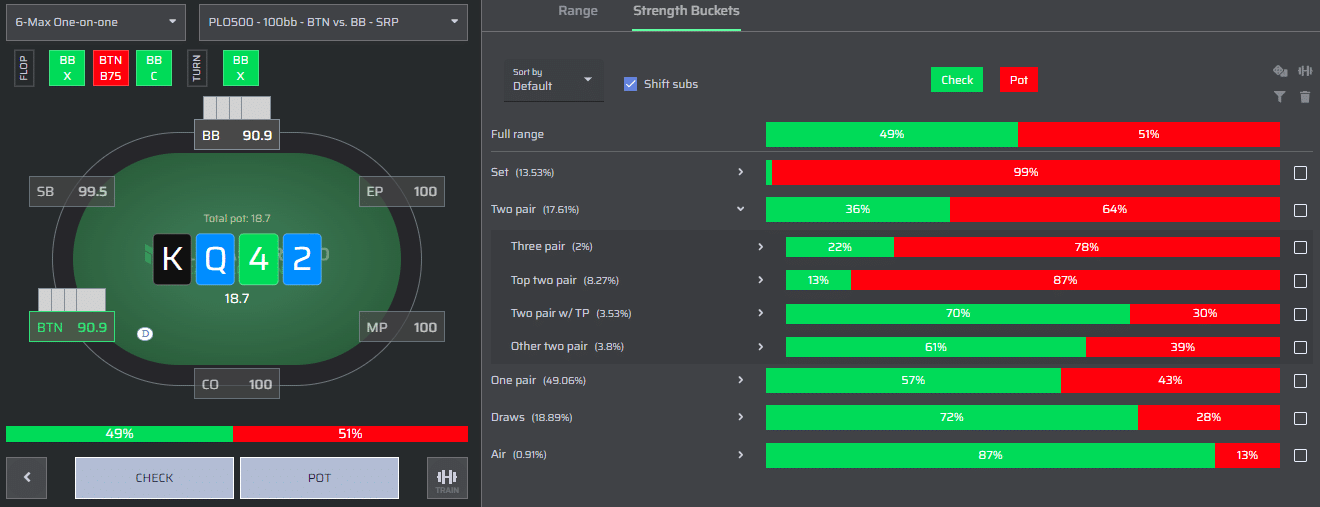
In the following chart, you can see that unless the nuts change on the river, we will have little betting in general, and often for a smaller size. This is because the check back on the turn significantly capped our range in this scenario.
River Betting – Blank Turns

Blank River

This card will lead us to bet mostly ½ pot if we decide to bet at all.
The nuts did not change, and we eliminated many of our strongest hands, like top sets and 2 pairs on the turn. By betting, we are looking to potentially get some thin value with our overpairs that have a pair blocker for example, or bluff cheaply with no showdown value.
EXPLOIT: You can likely bluff wider as the population is not protecting their checking range as much as GTO as they lead most of their strong hands on the river. Therefore fold equity increases and so does the EV of bluffing
Pairing/Flush River

We have a similar overall betting frequency here, but given that the nuts have now changed, we start mixing our sizing. This is because we now have more nutted hands in our range.
Think about a nut flush draw that we had on the turn. If this draw had showdown value, and would hate to get raised, we could easily find a check back, so we keep some nut flush draws in our range which allows us to support some larger bet sizes
Straight River

This transition gives us the largest nut advantage on the river. A large portion of our c-bet range on the flop will be gutshot type hands looking to take down the pot, that then look to check back on the turn once called.
We look to leverage this nut advantage with a large sizing on the river to get the most value out of our straights, but also to maximize the pressure on our opponents two pair type hands when we are bluffing.
Pairing Turns
When we encounter paired turns, it’s crucial to discern which card has paired.
If the top card has paired, this significantly favors the range of the Out of Position (OOP) player. This is primarily because the OOP player often calls top pair against a continuation bet, while the In Position (IP) player might frequently check back top pair on the flop. Due to this shift in range advantage towards the OOP player, our strategy leans heavily towards checking back.
River Betting – Top Paired Turns

In PLO, when our checking frequency is high, it’s essential to protect this range. This means we’ll occasionally check back even some of our powerhouse hands. For instance, in certain scenarios, we might find ourselves checking back hands as strong as a full house about 33% of the time.
Exploit: This strategy is predicated on the assumption that the OOP player is leading with approximately 25% of their range—a trend not always observed in real play. If the OOP player defaults to checking their entire range, the IP player should lean even more towards checking back some of their strong hands.
Since the IP player retains many strong hands after checking back on such a turn, they’ll be well-armed for various river scenarios. For instance, with blank river cards, the IP player can utilize a pot sized bet frequently, still boasting a nut advantage.
This dynamic is in stark contrast to the scenario where the turn was a blank, with a subsequent blank river, emphasizing how pivotal the turn check-back range is in shaping river strategies.
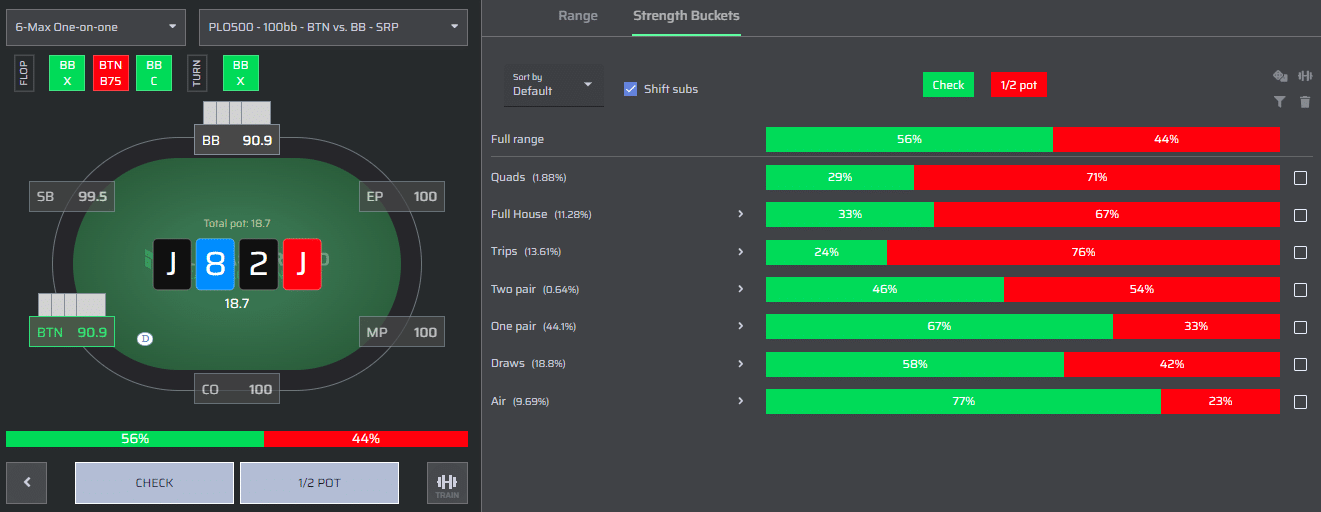
However, if the bottom card pairs on the turn, our betting strategy differs.
River Betting – Bottom Paired Turns

If we look at the different turns in PLO Trainer we see the large difference between betting frequencies.
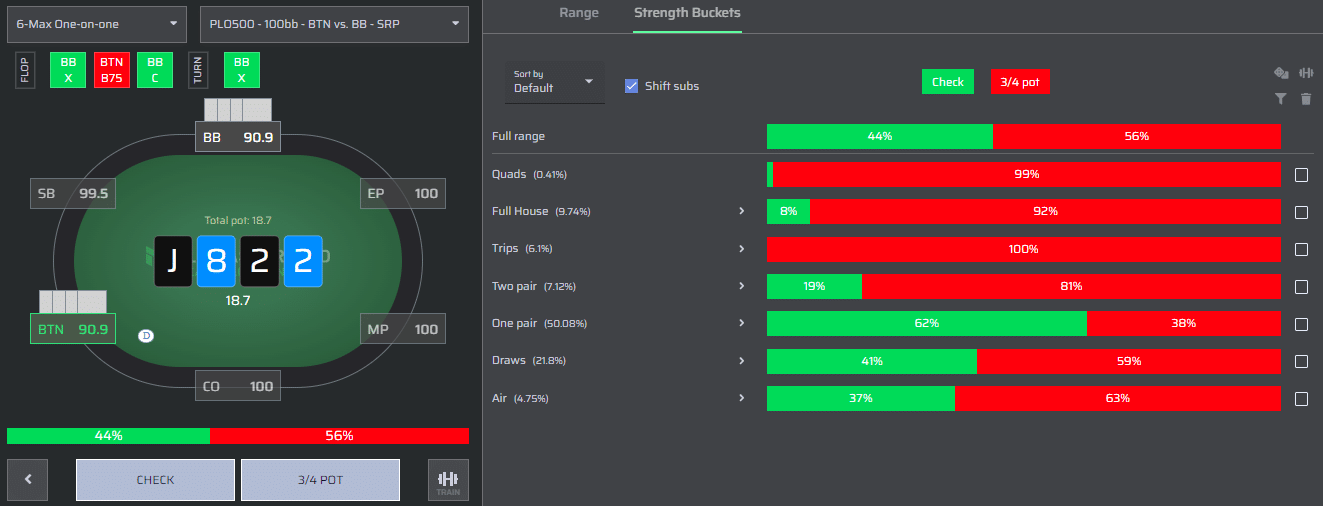
Here, we are inclined to bet with nearly all of our full houses and trips, given that this card meshes well with our flop continuation betting range. This is because OOP did not check / raise the flop and so we have many more top sets and two pairs in our range, which are now boats.
Consequently, if we do decide to check back on this kind of turn and face a neutral river card, our range becomes devoid of many strong hands. This naturally dials down our pot-betting frequency.
Flush Turns
When facing a turn that completes a flush, the In IP player typically has a nut advantage. This is based on the premise that the IP player continuation bet the flop without being check-raised, resulting in them holding around 11% of Nut Flushes compared to the OOP player’s 6%. This nut advantage permits the IP player to utilize a pot-sized bet, leading to a highly polarized betting strategy on the turn.
River Betting – Flush Turns

Given this scenario, there isn’t much strategic value in betting with lower flushes or sets. This is because with such a sizable bet, you’re primarily inviting calls from hands that are ahead of you.
As a result, once we reach the river we are quite capped on blank runouts given that most of our flushes are betting the turn (with the exception of when we hold 3 or 4 of the suit). This leads us to having a limited Pot betting strategy on non-nut changing rivers.
However, a pairing turn is going to give us the largest nut advantage, and Pot-sized bet frequency of 34%. This intuitively makes sense when you think about the most likely line that we took on the flop / turn of betting our sets and two pairs, then checking those hands back on the turn given our polarized betting strategy.
We therefore arrive on the river with more full houses than our opponent and can leverage a large size with our nut advantage.
Straight Turns
On turns that complete a straight, our strategy resonates with what we adopt on flush-completing turns, but there’s an added layer due to the potential for the nuts to change when a flush completes.
River Betting – Straight Turns

When faced with straight turn cards, we often check back a substantial number of sets and two-pair hands that are now full houses, providing us a significant edge in hand strength, enabling larger bets on the river.
However, when the river card is a blank our approach is more measured, tending towards smaller bets and more frequent checks. This is because we typically bet our top straights and prime blockers on the turn, leaving our range notably capped on such river cards.
Yet, we’ll still retain some flushes, including the nut flush, in our possible hand combinations. Consequently, our betting strategy on these river scenarios becomes varied, partly because we might sometimes check back our potential flushes on the turn, especially those with decent showdown value, to avoid being check/raised off our equity.
Conclusion
Mastering the Bet-Check-Bet line in Pot Limit Omaha requires a deep understanding of hand range transitions from the flop to the river. As we navigate these intricate paths in PLO strategy, both theoretical knowledge and practical adaptability are key.
To optimize your poker training, it’s essential to pinpoint specific lines within the game tree and dissect them with unwavering focus. Recognizing shifts in ‘nuts’, the impact of check-backs on our hand range, and exploiting common player tendencies are crucial for optimal play.



